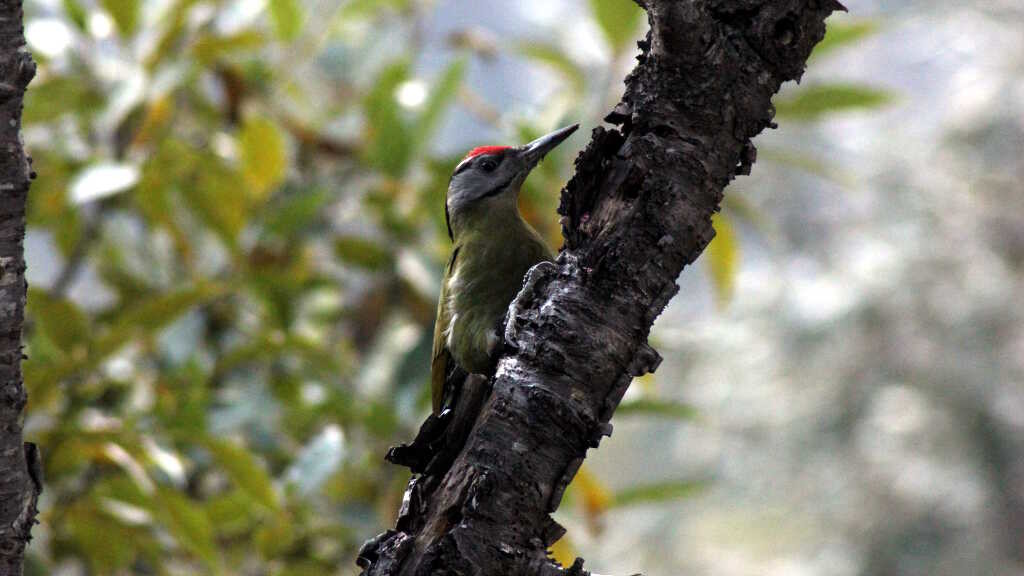
Picus canus (Grey-headed Woodpecker)
The Grey-headed woodpecker (Picus canus) is a captivating species of woodpecker found in the temperate forests of the Great Himalayan National Park (GHNP). Recognized for its distinctive grey head and greenish body, this medium-sized bird is an essential part of the rich avian biodiversity within the park. Its secretive nature and loud, ringing call make it both a challenge and a delight for birdwatchers to spot.
Identification and Features
Measuring around 25–30 cm in length, the grey-headed woodpecker has a green back, grey head, and a pale underbelly. The male can be distinguished by a small red patch on the crown, which the female lacks. Its long, strong bill is ideal for chiseling into tree bark in search of insects. Its flight is undulating, typical of woodpeckers.
Habitat in the Great Himalayan National Park
In GHNP, the grey-headed woodpecker thrives in mixed and deciduous forests, particularly in areas with old trees and abundant deadwood. It is most commonly found between 1,500 and 3,000 meters in elevation, frequenting oak, deodar, and rhododendron forests. The species favors quiet, mature forests, often staying hidden in the upper canopy.
Behavior and Diet
Grey-headed woodpeckers feed primarily on ants, beetle larvae, and other insects found in decaying wood or on tree trunks. They also eat fruits and berries, especially in winter when insects are scarce. Using their stiff tail for support, they cling to trunks and branches while foraging, and their drumming echoes through the forest as a territorial signal during the breeding season.
| Common name | Grey- headed Woodpecker |
| Scientific name | Picus canus |
| Family | Psittacidae |
| Description | It has a plain grey face, black-nape and moustache like, and uniform greyish-green upperparts. A resident of the Himalayas. |
Breeding and Nesting
Breeding typically occurs from April to June. Grey-headed woodpeckers excavate nest cavities in dead or decaying trees, where the female lays a clutch of 4–6 white eggs. Both parents share incubation duties and feed the chicks until fledging.
Conservation and Ecological Role
Although listed as a species of Least Concern, the grey-headed woodpecker is dependent on healthy, mature forests. In GHNP, the protection of native woodlands ensures stable habitats for this and many other cavity-nesting species. Their foraging helps control insect populations and contributes to forest regeneration through seed dispersal.



